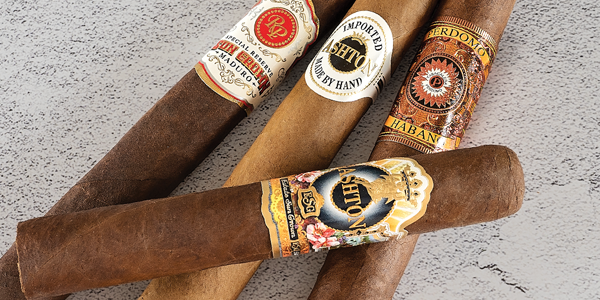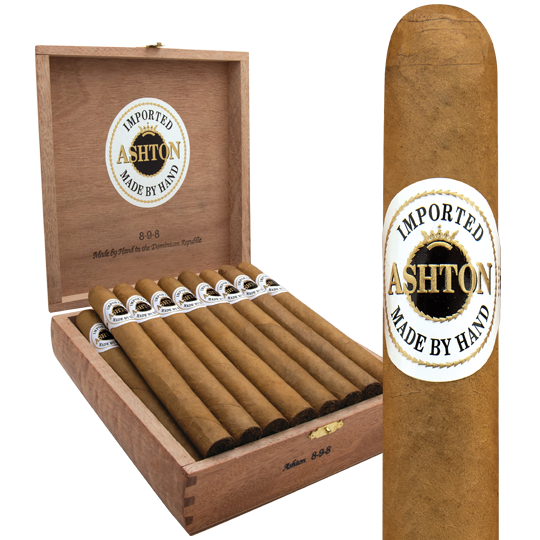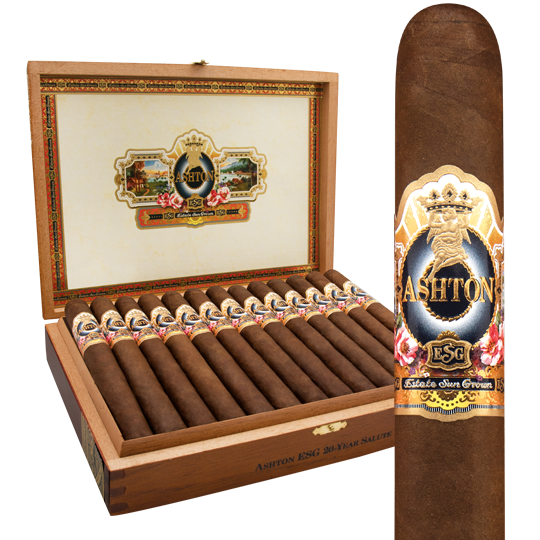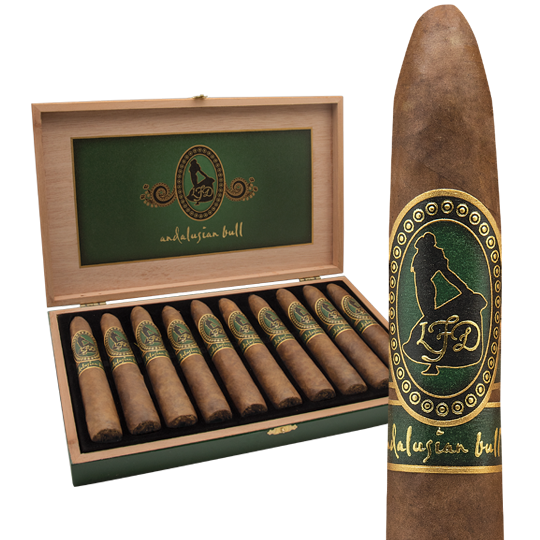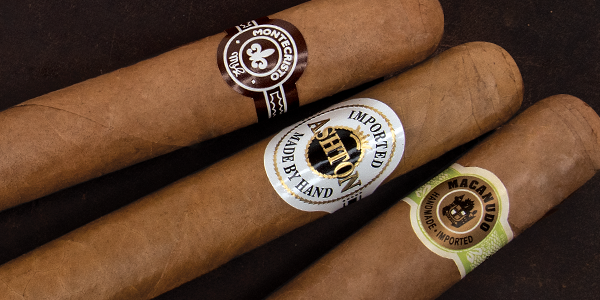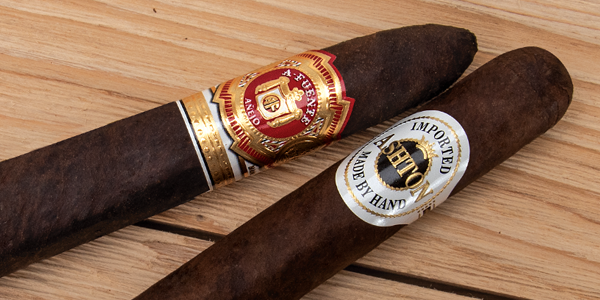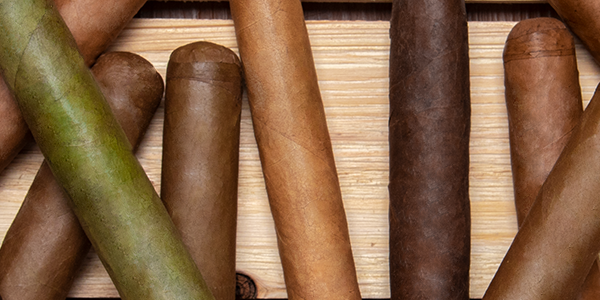Shade Grown vs. Sun Grown Cigar Wrappers
Let’s bring it all out of the dark. All tobacco is grown in the sun. Tobacco plants need the sun. The issue, when it comes to what are called Shade Grown vs. Sun Grown cigar wrappers, is whether the tobacco is exposed directly to the sun, or a barrier, a filter, is placed between the sun and the tobacco plants. Sun Grown yields tobacco that is stronger in flavor. Shade Grown wrappers are considered more refined.
What Is Shade Grown Cigar Wrapper?
Very simply, shade grown cigar wrapper refers to cigar wrapper leaf that has been grown under a sort of tent. This is known in Spanish as a tapado, or covering. The filter provided by the tapado helps create a thinner, more elastic tobacco leaf with thinner veins. This can all help create a leaf with a smooth texture. The original practice of growing tobacco in the shade began in 1900 in the Connecticut River Valley in the northeastern US. Those tapados were made of cheesecloth. Today, most growers prefer nylon.
What Is Sun Grown Cigar Wrapper?
As mentioned, sun grown cigar wrapper leaves are exposed directly to the sunlight. This creates thicker veins in the leaves. (By the way, all filler tobacco is sun grown.) The result of direct solar exposure is a fuller, sweeter flavor and darker leaves. Some of the sun grown tobacco in parts of the world benefit to a degree from a sort of natural shade of cloud cover. In Ecuador and parts of Indonesia, cloud cover provides a soft filter for the sun grown tobacco.
Connecticut: Shade Grown vs. Sun Grown
The Connecticut River Valley starts north of Hartford and rolls into Massachusetts. There, you can see Shade Grown tobacco plants of nine feet in height as they reach for the sunlight that nourishes them. Not far from these, Broadleaf tobacco – which is sun grown – is being grown. Different seeds are planted to grow Broadleaf and the plants are shorter with leaves much larger than the shade grown variety. After curing and fermentation, the Broadleaf tobacco leaves are rich, dark brown, and used for, among other styles, Maduro wrappers.
Yankee History
Tobacco farming in Connecticut began before European settlers arrived in the 1630s. Native Americans were already growing the plant. Founded in 1633, the town of Windsor became the center of the tobacco industry in Connecticut. Initially, Broadleaf was grown for cigar tobacco and it eventually became so popular and of such good quality that during the Civil War the Connecticut Valley produced nearly 10 million pounds a year.
In the 1700s, Connecticut Broadleaf was being sent to Europe as wrapper leaf. Binder was also grown in the valley. By the 1830s, farmers were experimenting with different seeds and new ways to process the crop. They imported seeds from Cuba and began harvesting a new, smoother, more attractive leaf that yielded a higher percentage of leaves suitable for wrappers. In the 19th century, Sumatra tobacco started to be planted in Connecticut. The demand for better and better quality persisted around the world. In Connecticut, farmers and scientists worked together to develop smoother, golden leaves. They worked to create a hybrid that would beat competing leaves from Cuba and Asia. Using more than 30 samples from Cuba and Sumatra, Shade Grown tobacco came to be in 1900.The first shade tent was erected in Windsor. The tents cut sunlight and raised humidity. Very little has changed in how Shade Grown cigar wrapper is cultivated since then.
Wrapper Goes International
At its peak, more than 20,000 acres of Shade Grown were being cultivated in Connecticut. Today, that’s fallen to just about 2,000 acres. Today, all types of tobacco are now grown in many different parts of the world. Shade Grown is perhaps the most prized. Ecuador, in particular, offers a Shade Grown tobacco that is less expensive and considered more consistent.
Steve Saka, the founder of Dunbarton Tobacco & Trust, calls Ecuador’s Connecticut Shade Grown Tobacco better than Connecticut’s own.
“The Ecuador variety isn’t as delicate on the table, which I find easier to work with.” Saka has said. “More importantly, is the flavor. The leaf rarely exhibits the bitterness of Windsor Valley, Connecticut, which almost always turns grassy and bitter if it’s slightly over-smoked, whereas the Ecuador can endure higher combustion temps without negatively impacting its flavor.”
Ecuador has been prominent for more than 30 years, since the tobacco-growing Oliva family (not the one that made Oliva Cigars) set up operations there. The Oliva Tobacco Company runs several farms in Ecuador that grow wrappers for many prominent cigar brands.
Jhonys Diaz, Vice President of Operations for General Cigar, explained Ecuador is a great place to grow almost anything.
“It has excellent soil, plenty of available water and a superb climate,” Diaz told Cigar Journal. “With its natural cloud cover, [it] mimics the way we grow tobacco under shade cloth in Connecticut. All these factors combine to produce a tobacco leaf with excellent color, texture, fine veins and a beautiful sheen.”
Ernesto Perez-Carrillo, founder of EPC Cigar Co., likes the spice in Ecuador’s Sun Grown Habano wrapper. Ecuador Sumatra too. Indonesian Sumatra has a sharp, metallic flavor and is quite bland. Ecuador’s version offers much more flavor and aroma. Rocky Patel calls the Ecuador Habano Sun Grown “the most flavorful of any wrapper out there,” carrying more spice, pepper, sweetness and caramel notes. He likes Ecuador Sumatra for its spice and white pepper.
Shade Grown vs. Sun Grown Cigar Wrapper Cigars
If you want to compare Shade Grown vs. Sun Grown Cigar Wrappers, here’s my list of what to try. I think you’ll like each of these cigars and really love some of them. You may light up!
The Ashton Classic and Cabinet lines are both wrapped in Connecticut Shade from the Connecticut Valley. The Ashton Classic is a mild cigar in a blond wrapper, with fairly rich flavors of cedar, almonds and crème brûlée from the blending of the wrapper and Dominican filler tobaccos. The Ashton Cabinet Selection gets a little stronger with a slightly darker Connecticut Shade Grown wrapper around some distinctive four- and five-year old Dominican filler. The flavors, rich and creamy, deliver a vanilla-like sweetness.
The Ashton Estate Sun Grown (ESG) is this writer’s favorite cigar. It carries an ultra-rare Dominican Sun Grown wrapper grown on the world-famous Chateau de la Fuente estates. The ESG is rich and intricate. There’s a lot of spice, nuts, leather, and layers of cedar and earth. Smooth and creamy textures last from beginning to end. Splurge and give this one a try.
A very good example of an excellent, slightly milder cigar using Ecuador Connecticut Shade Grown wrapper is the Liga Undercrown Shade by Drew Estate. The Belicoso, for example, 6 x 52 and about $9, is a medium smoke handcrafted in Nicaragua with Dominican and Nicaraguan fillers. You get some nice toasted white pepper, sweet tea, and nuts with a very creamy finish.
The Rocky Patel Sun Grown, by contrast, is a full-bodied cigar using an Ecuador Sun Grown wrapper around Nicaraguan, Dominican, and “some exotic Brazilian tobaccos.” The wrapper is spicy and delivers notes of peppers and cedar with a leathery finish. This is a strong, but beautifully balanced cigar. The Robusto, 5.5 x 50, runs about $7. The Maduro version of this cigar, the Rocky Patel Sun Grown Maduro Robusto, with a US/Connecticut Sun Grown Broadleaf wrapper and Nicaraguan filler, was Cigar Aficionado’s number two Cigar of the Year in 2016.
The medium-bodied Davidoff Aniversario is covered by a silky smooth Ecuador Connecticut Shade Grown wrapper containing Dominican filler. It’s very smooth and cedary, with notes of nuts, cream and coffee. La Flor Dominicana’s Andalusian Bull boasts an Ecuador Corojo wrapper. This is a Sun Grown wrapper.

